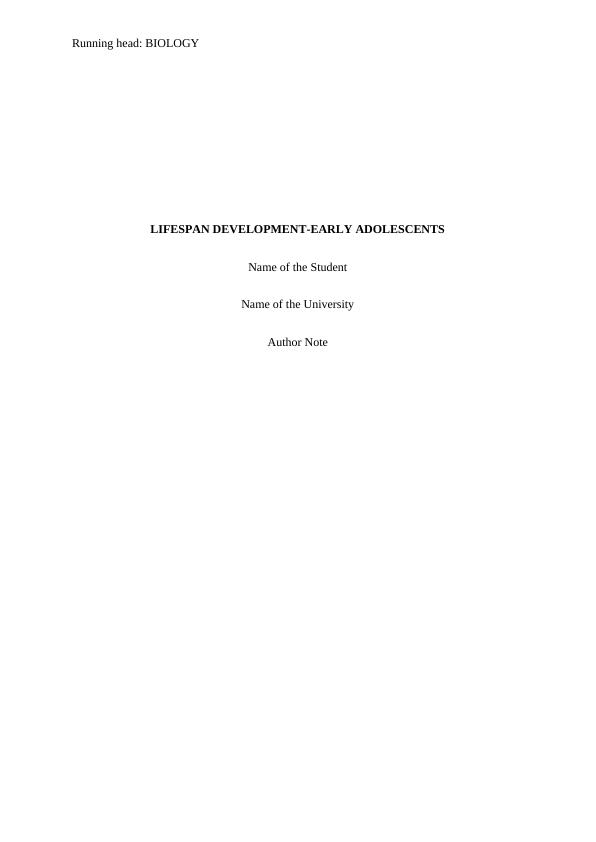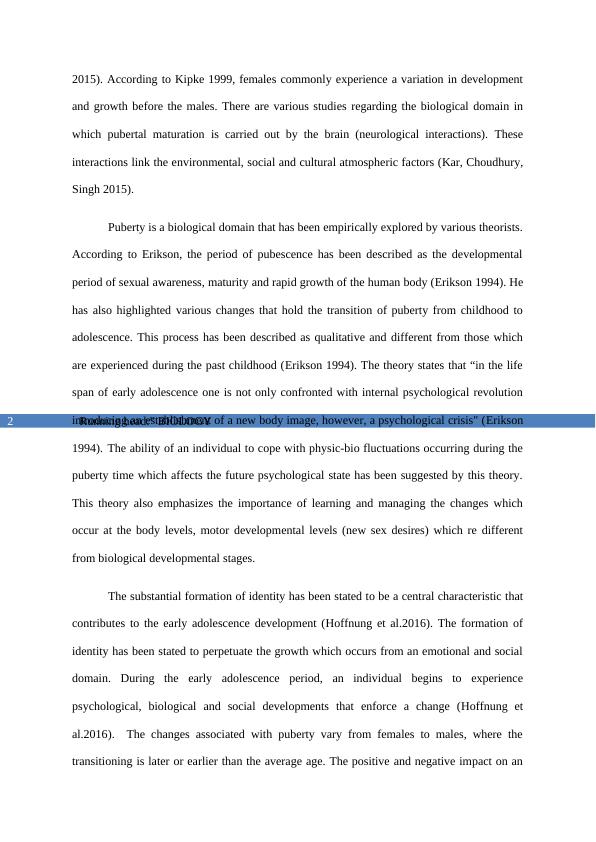England Journal of Medicine
This essay explores the early adolescent stage of development, focusing on the characteristics of puberty and identity formation through biological and socio-emotional lenses.
6 Pages1551 Words20 Views
Added on 2022-09-01
England Journal of Medicine
This essay explores the early adolescent stage of development, focusing on the characteristics of puberty and identity formation through biological and socio-emotional lenses.
Added on 2022-09-01
ShareRelated Documents
End of preview
Want to access all the pages? Upload your documents or become a member.
Human Development Across the Lifespan
|7
|1625
|393
Adolescence Developmental Stage and Importance of Biological and Social Influence
|10
|2584
|96
Human Development In The Middle Adolescent Stage
|8
|1338
|331
Childhood: Key Concepts and Theories
|4
|594
|258
Analyzing the stages in Adolescence
|6
|1295
|399
Human Relationships and Life Transitions: Understanding Psychosocial Development in Early Childhood
|6
|1746
|59



